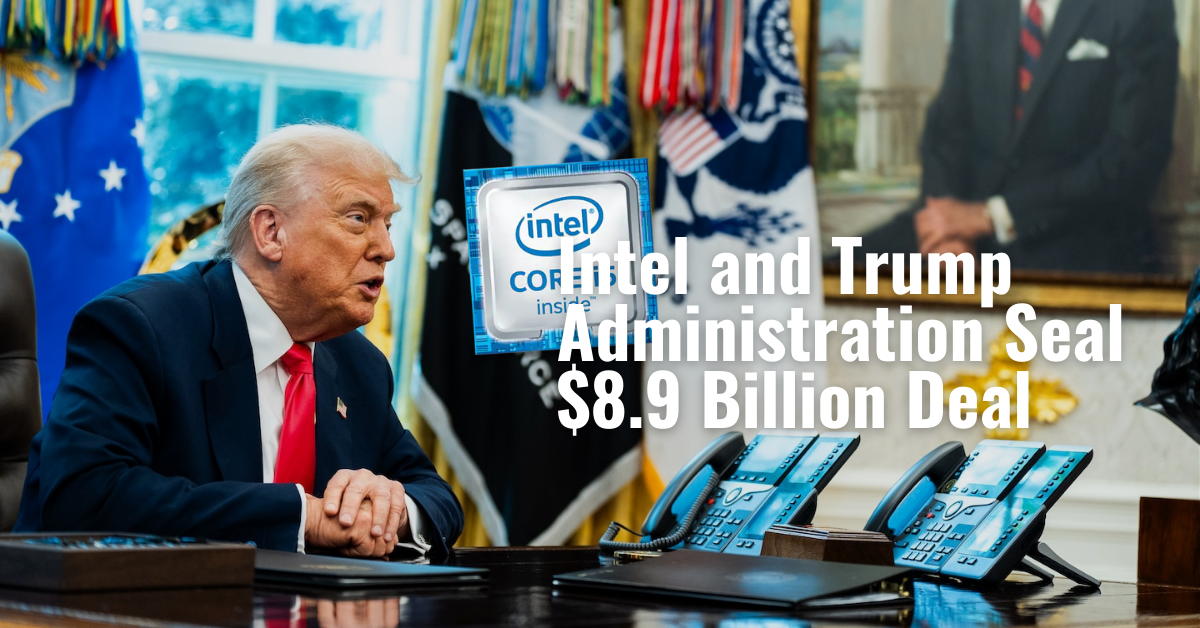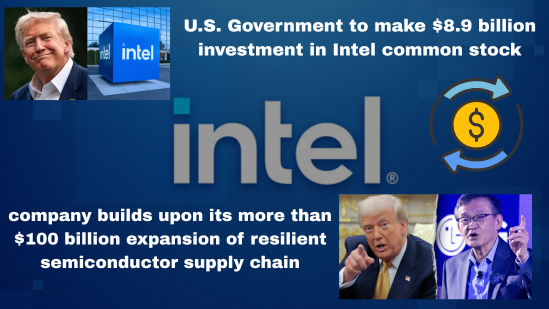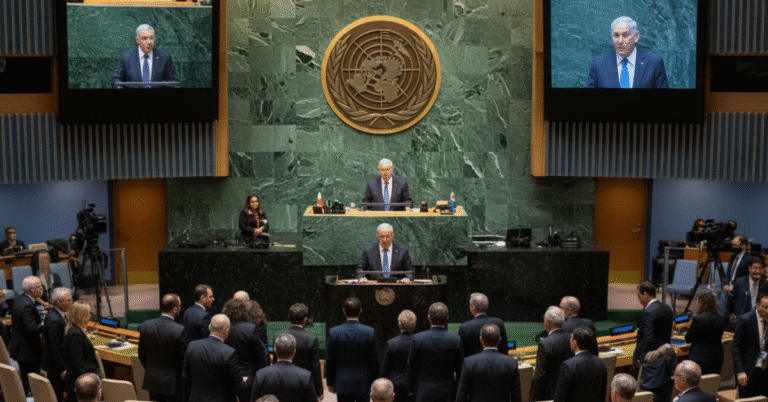
SANTA CLARA, Calif. – Intel Corporation has entered into a historic agreement with the Trump Administration aimed at strengthening America’s semiconductor manufacturing and technology ecosystem. As part of this deal, the U.S. government will acquire a $8.9 billion stake in Intel common stock, reinforcing its confidence in Intel’s ability to power the nation’s future in AI, chipmaking, and national security.
Breakdown of the $8.9 Billion Investment
The funding will be drawn from:
- $5.7 billion in previously approved CHIPS and Science Act grants.
- $3.2 billion allocated under the Secure Enclave program for defense-related semiconductor development.
In addition, it has already received $2.2 billion in CHIPS grants, making the total U.S. government investment $11.1 billion.
This strategic move ensures Intel continues delivering secure, advanced chips for both commercial and defense applications, while accelerating America’s technology independence.
Intel’s Commitment to U.S. Manufacturing
It has long been at the center of U.S. semiconductor innovation. In the past five years alone, the company has invested:
- $108 billion in capital expansion
- $79 billion in research and development
Most of these resources have been channeled into U.S.-based manufacturing sites, positioning It as the only leading-edge chipmaker conducting both R&D and production domestically.
Ongoing Expansion
It is currently executing a $100 billion+ U.S. chipmaking expansion plan, including new fabs in Arizona set to begin high-volume production later this year. These facilities will host the most advanced semiconductor process technology on U.S. soil.
Government’s Stake and Terms

The agreement includes:
- 433.3 million Intel shares at $20.47/share → A 9.9% U.S. government stake.
- 5-year warrant at $20/share for an additional 5% ownership, exercisable only if It falls below 51% foundry control.
- Passive ownership model – no board seats or governance rights, but voting aligned with Intel’s board.
This structure allows U.S. taxpayers to benefit from It’s growth while ensuring stability in the semiconductor supply chain.
Industry Leaders Back the Move
Tech giants quickly rallied behind the announcement:
- Satya Nadella (Microsoft CEO): Praised Intel’s role in strengthening the U.S. semiconductor supply chain.
- Michael Dell (Dell Technologies CEO): Called Intel vital to America’s manufacturing resilience.
- Enrique Lores (HP CEO): Highlighted Intel’s role in future innovation and U.S. leadership.
- Matt Garman (AWS CEO): Emphasized the importance of semiconductors in AI and cloud infrastructure.
Why This Deal Matters
The Intel–Trump Administration deal isn’t just financial—it’s strategic. It ensures:
- National Security: Secure domestic chip supply for defense.
- Economic Growth: Strengthening U.S. manufacturing jobs and infrastructure.
- AI & Tech Leadership: Positioning America as the global leader in artificial intelligence, cloud computing, and next-gen technologies.
The United States government’s $8.9 billion commitment marks one of the largest investments in semiconductor manufacturing in history. This move comes at a time when global chip shortages have highlighted the importance of domestic production capacity. By supporting next-generation facilities, the administration is signaling its intent to reduce dependency on foreign suppliers and strengthen national security.
Beyond economic growth, the deal carries strategic implications for the future of artificial intelligence, 5G, and advanced computing. Semiconductors remain the backbone of emerging technologies, and scaling up domestic production will help the country maintain leadership in critical industries. The investment also aligns with the CHIPS and Science Act, which was designed to accelerate innovation while creating thousands of high-paying technical jobs across multiple states.
Industry experts note that this funding will not only boost supply chain resilience but also encourage private-sector partnerships. With billions flowing into research, development, and production, American firms are expected to gain an edge over competitors in Asia and Europe. The announcement is being closely watched by global markets, as it underscores the shift toward reshoring advanced technology manufacturing in the United States.
Conclusion
This $8.9 billion U.S. government investment in Intel marks a turning point for America’s semiconductor independence and AI technology dominance. With historic expansions, cutting-edge fabs, and strong industry backing, It is set to lead the U.S. into a new era of technological and economic leadership.






